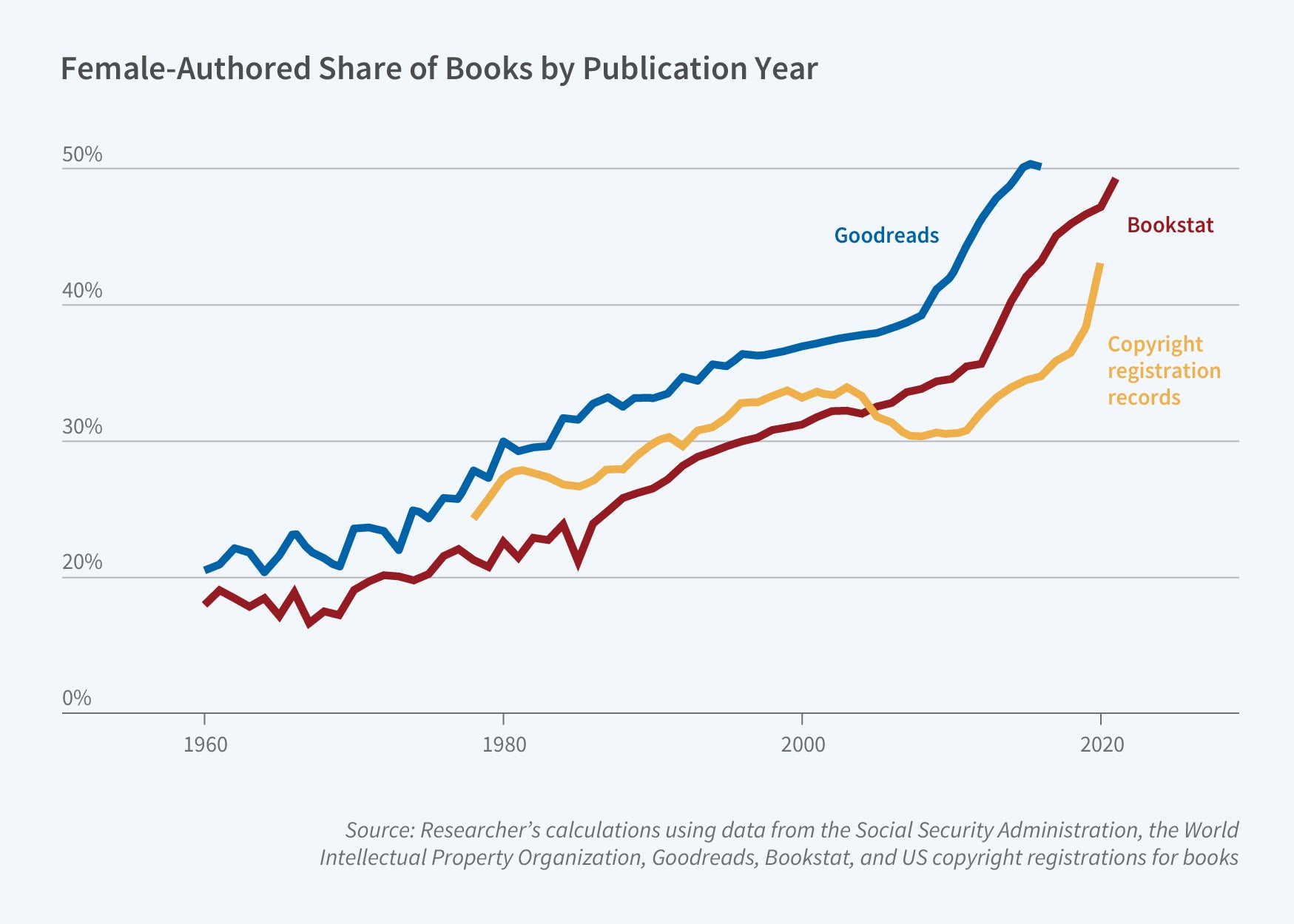The Growth of Female Authorship in the US Book Market

The share of published books by female authors and the share of book spending on female-authored books have risen in tandem.
Only 10 percent of nineteenth-century books in the Library of Congress have authors with female first names. The female-authored share of the new book market was just 18 percent in 1960, but women authored a third as many books as men in 1970 and were producing the majority of books by 2020.
In The Welfare Effect of Gender-Inclusive Intellectual Property Creation: Evidence from Books (NBER Working Paper 30987), Joel Waldfogel quantifies the effects that growth in female authorship has had on consumers and producers. He finds that the influx of female-authored books raises consumer welfare and provides value to consumers that male-authored books would not have delivered in their absence.
The book market provides a useful context for this research because books have observable usage, which can be used to evaluate welfare. Waldfogel draws data from Bookstat on over 10 million distinct e-book and print editions sold by Amazon between 2018 and 2021 and from nearly 230 million ratings of 1.8 million books by over 800,000 consumers on Goodreads between 2007 and 2016. These datasets permit inferences about the effects of the female author influx not only on overall consumer welfare but also on the welfare of different kinds of consumers with different preferences.
Waldfogel shows that the female author influx has coincided with rising shares of female-authored books among award nominees and bestsellers. As the share of female-authored books has risen, the share of book spending on female-authored books has risen in roughly equal proportion, which demonstrates that consumers value these new titles.
The study does not find any evidence that publishing of increased numbers of female-authored books crowds out publishing of books by male authors, but there are offsets in revenue. When compared with a counterfactual environment with less female authorship, aggregate revenue roughly doubles for female authors while it falls by about a quarter for male authors. Consumers, however, regardless of whether they generally prefer books by women or by men, are better off as a result of the rise in female authorship. The gain in consumer surplus, a standard measure of household welfare, is 15 percent for male-leaning readers and 41 percent for those who prefer female authors. Inclusive innovation in books is a “win-win” situation: the influx of female authors is welfare improving not only for women as authors and as readers but also for the broader reading population, including men whose book purchases fall in traditionally male genres.
— Lauri Scherer


